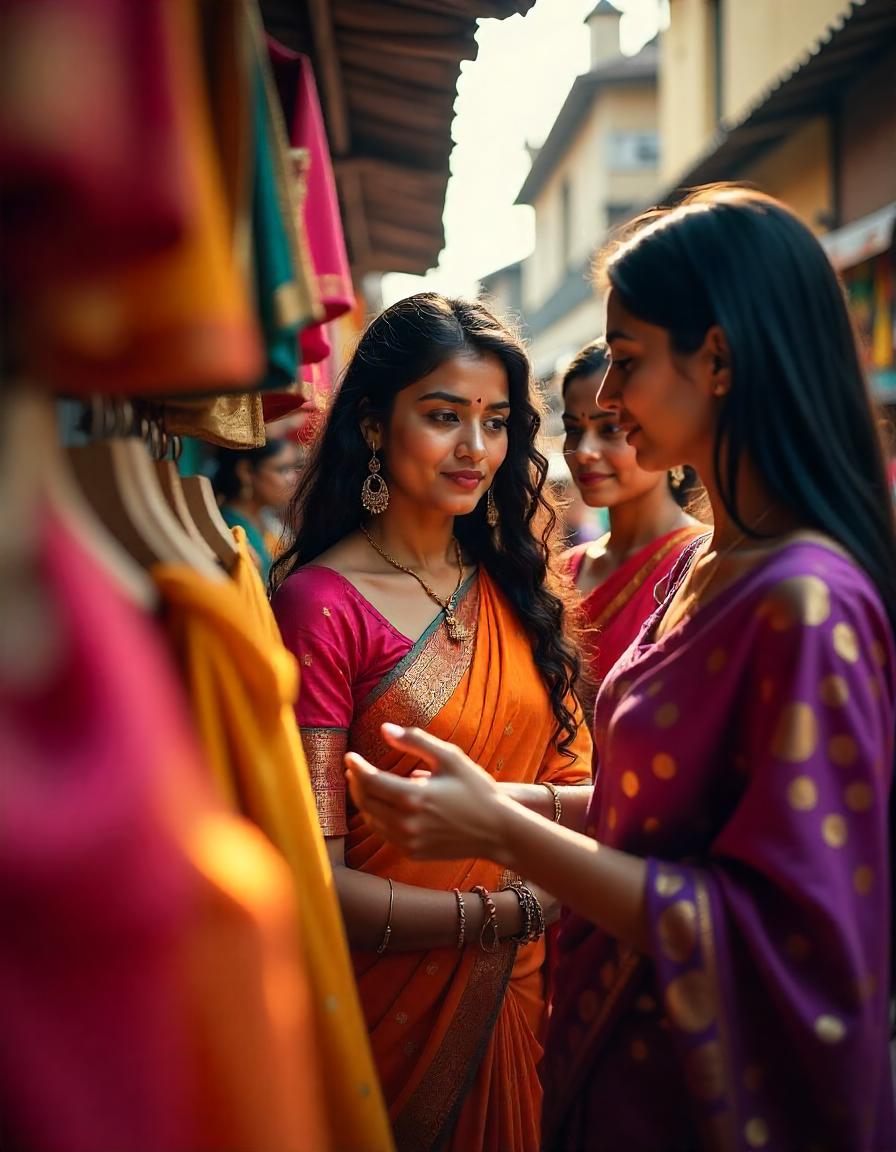A Shopper’s Guide to Authentic Bomkai Sarees
Bomkai sarees, also known as Sonepur sarees, are a mesmerizing blend of tradition and craftsmanship. They hail from the state of Odisha in India. These sarees, which are well-known for their elaborate patterns and vivid hues, represent the rich cultural legacy of Odisha. If you plan to purchase an authentic Bomkai saree, this guide will help you navigate the essential aspects to consider, ensuring you make an informed decision.
Understanding the Craft: The Essence of Bomkai Sarees
- Weavers craft Bomkai sarees using a unique weaving technique that combines traditional ikat patterns with intricate embroidery. The village of Bomkai in the Ganjam district has perfected this weaving art form over generations. The designs typically feature geometric patterns, floral motifs, and mythological themes, often using vibrant colors like red, black, and yellow.
- Understanding the artistry behind a Bomkai saree is crucial when shopping for one. Authentic Bomkai sarees showcase the skilled craftsmanship of weavers, often taking weeks or even months to complete a single piece. Look for sarees that reflect this dedication and artistry.
Fabric Matters: Choosing the Right Material
- Bomkai sarees are primarily cotton and silk, with each fabric offering a distinct feel and appearance. Cotton Bomkai sarees are lightweight and breathable, perfect for everyday wear and summer occasions. In contrast, silk Bomkai sarees are elegant and ideal for festive occasions and celebrations.
- When buying a Bomkai saree, pay attention to the fabric. Authentic silk sarees will have a luxurious sheen and a soft texture, while cotton sarees will feel lighter and more casual. Always check for the fabric label to ensure you purchase a genuine product.
Color Palette: Embracing Vibrancy
- One of the standout features of Bomkai sarees is their vibrant color palette. Traditionally, these sarees incorporate bright colors like red, orange, blue, and green, often combined in stunning contrast. The colors used in authentic Bomkai sarees are derived from natural dyes, adding to their appeal.
- When selecting a saree, consider your style and the occasion. Opt for bold colors for festive events and more subtle hues for casual or professional settings. Additionally, ensure the colors are consistent throughout the saree and do not appear faded or washed out, as this can indicate a lack of authenticity.
Patterns and Motifs: Recognizing Authenticity
- The designs on Bomkai sarees reflect Odisha’s rich cultural heritage. Look for unique motifs representing the region’s traditions, such as intricate ikat patterns, tribal designs, or mythological scenes. An actual Bomkai saree would have handwoven patterns that are painstakingly created, with each thread demonstrating attention to detail.
- Be wary of machine-made sarees that mimic Bomkai styles. Authentic pieces will have slight variations in design, showcasing the artisan’s skill. Examine the pallu (the decorative end of the saree) and borders for intricate designs that exemplify the weaver’s craftsmanship.
The Importance of Weaving Techniques
- Understanding the weaving techniques used in Bomkai sarees can help you identify authentic pieces. Traditional Bomkai weaving employs the ikat technique, dying the yarns before weaving, creating distinct patterns. This process is labor-intensive and time-consuming, contributing to the saree’s value.
- When shopping, inquire about the weaving technique used for the saree. Authentic Bomkai sarees will typically be handwoven, with the ikat technique visible in the patterns. If possible, ask the seller about the weaver or the origin of the saree to ensure its authenticity.
Price Point: Quality Comes at a Cost
- Authentic Bomkai sarees are a testament to the skill and time invested by the weavers. As such, they often come with a higher price tag than mass-produced alternatives. When shopping, be cautious of prices that seem too good to be true, as they may indicate lower quality or imitation products.
- Purchasing a genuine Bomkai saree will guarantee that you receive a product that symbolizes this traditional cloth’s creativity and cultural value, even though it’s still important to consider your budget. Depending on the fabric’s quality and the intricate nature of the work, buyers can spend tens of thousands of rupees on a high-quality Bomkai saree.
Trustworthy Sources: Where to Buy
- To ensure you purchase an authentic Bomkai saree, choose reputable sources. Look for established handloom stores, artisan cooperatives, or online platforms specializing in traditional Indian textiles. Additionally, visiting local craft fairs or exhibitions can be a great way to meet artisans directly and learn about their work.
- To determine a seller’s legitimacy, look for reviews and testimonials from previous customers. Purchasing straight from weavers or cooperatives ensures authenticity, boosts regional businesses, and aids in preserving traditional crafts.
Cherishing Tradition with Each Purchase
Purchasing an original Bomkai saree is an opportunity to assist skilled craftspeople and embrace a rich culture while owning a stunning article of clothing. By understanding the essential elements—fabric, color, patterns, weaving techniques, price, and reliable sources—you can make an informed decision that honors the artistry behind these exquisite sarees.
Whether for a special occasion or to add to your wardrobe, a Bomkai saree is a timeless treasure that will add elegance and cultural significance to any collection. Happy shopping!


